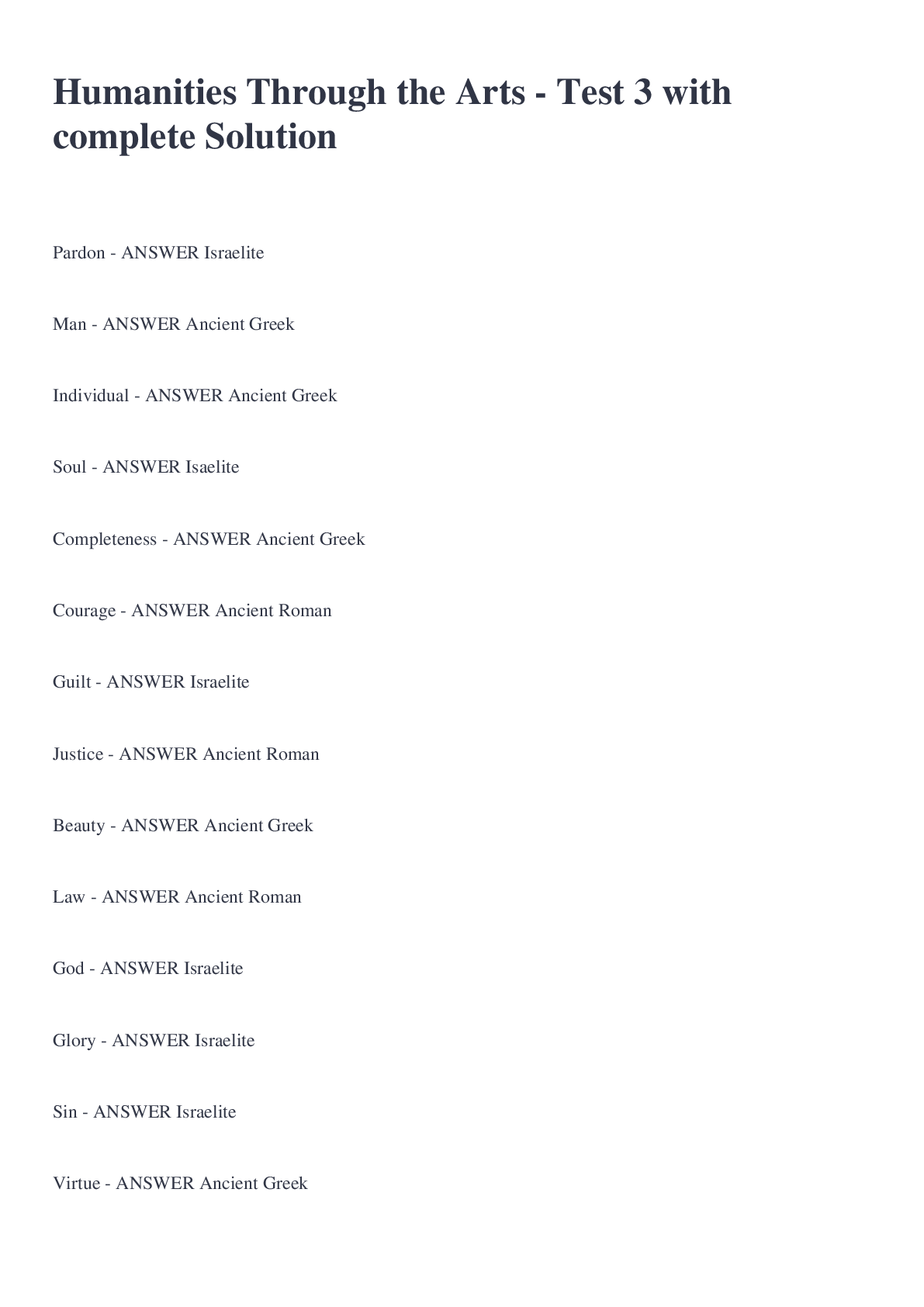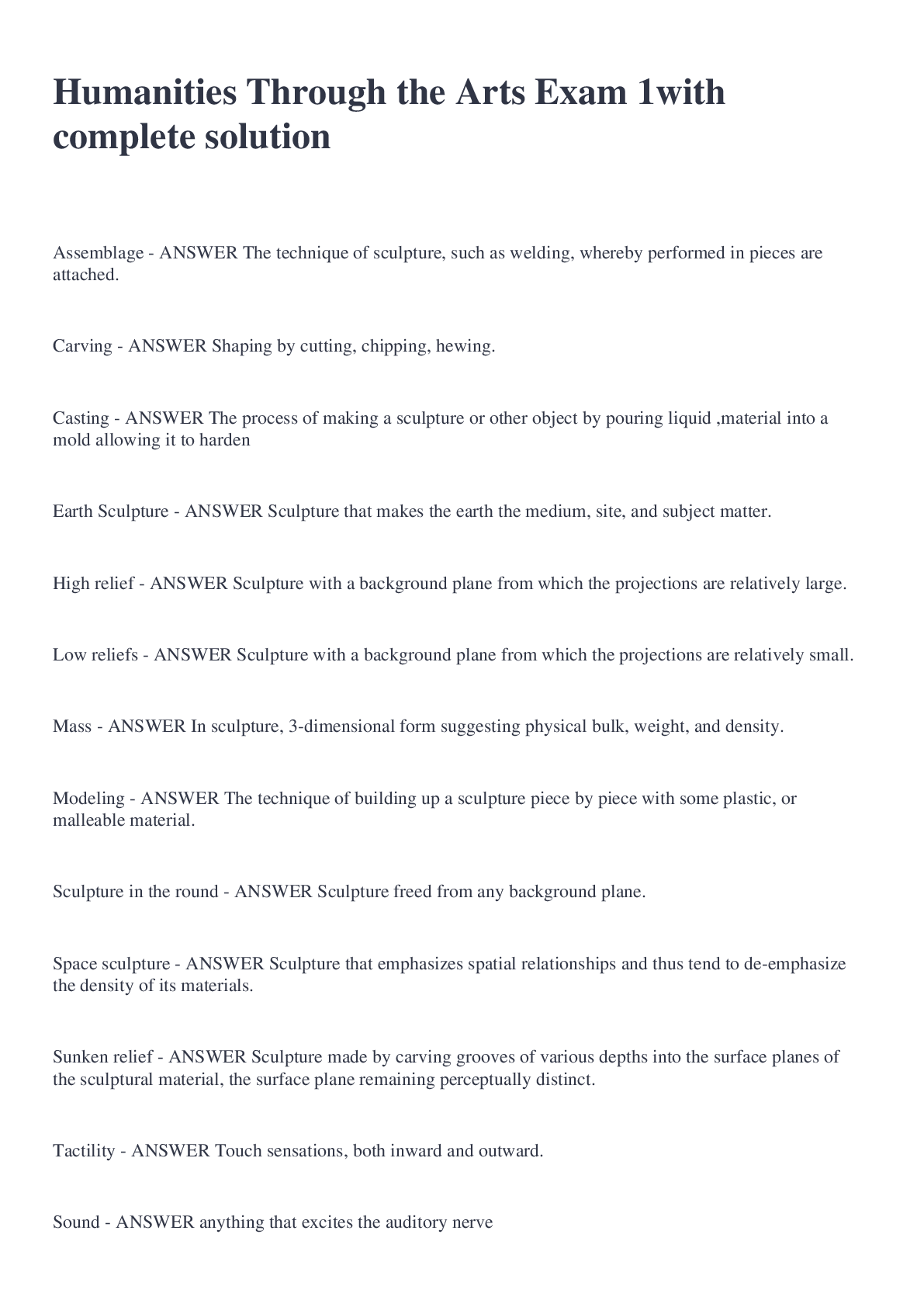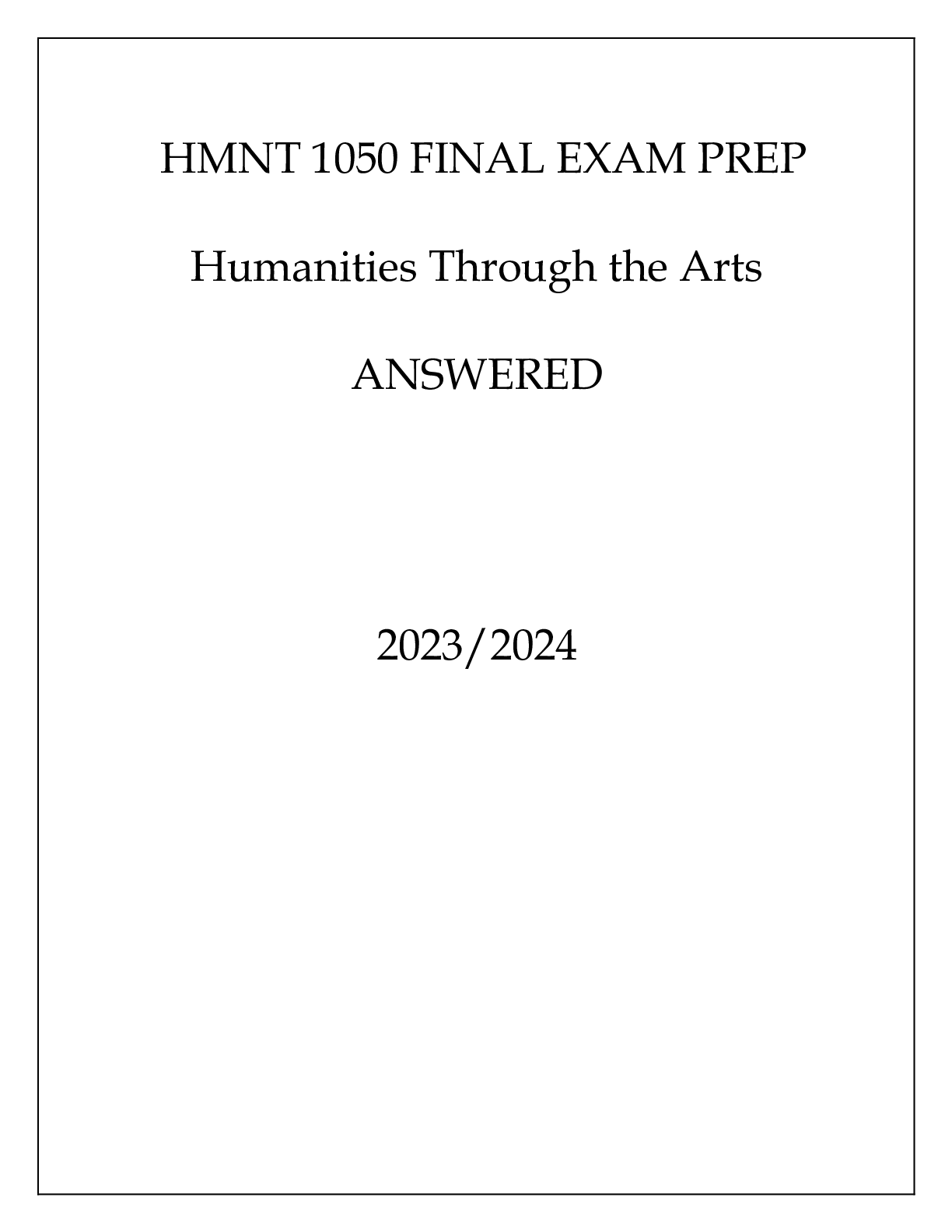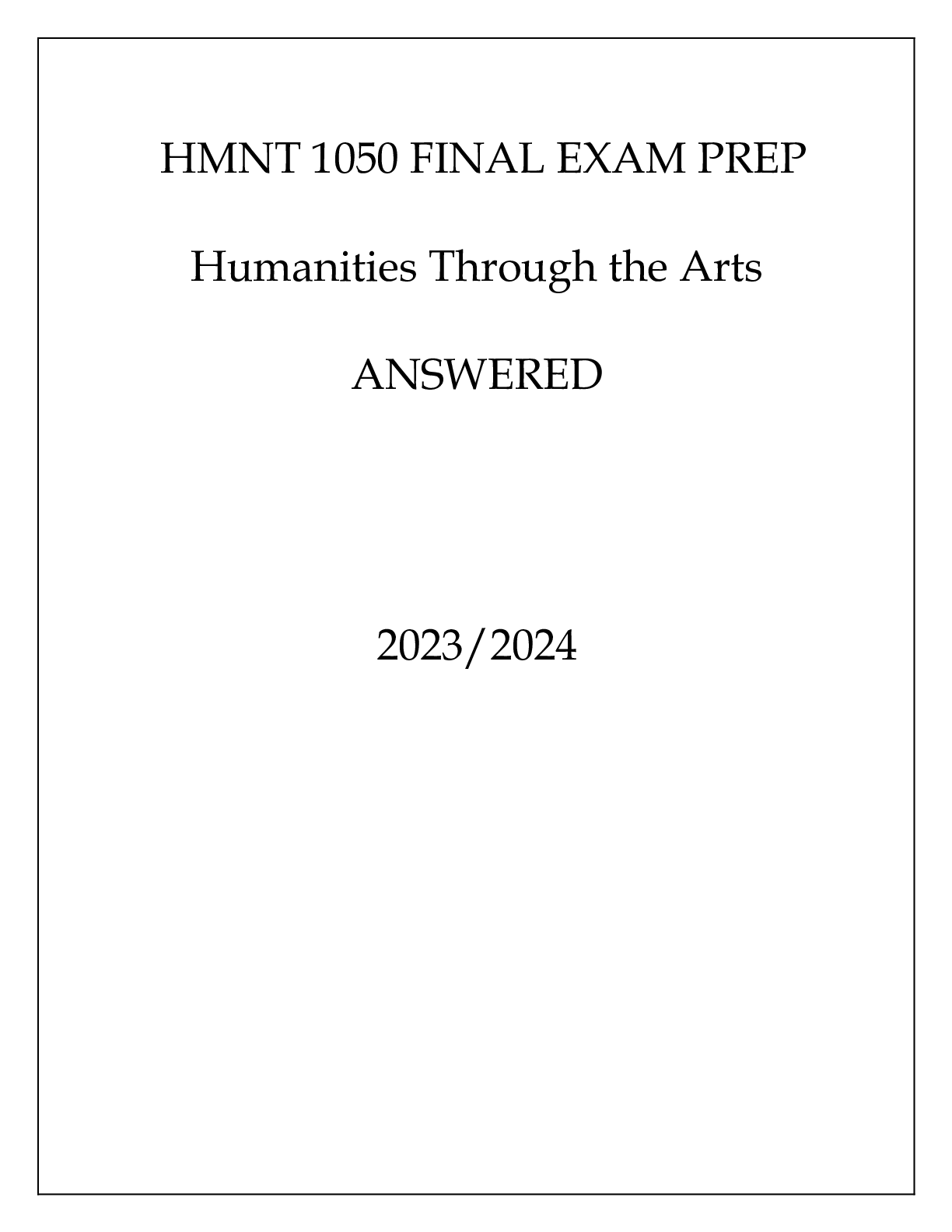The Humanities through the Arts DBU Exam 3: Chapters 9-10 (Richard) Solved 100%
Document Content and Description Below
What is one of the most powerful arts? - ANSWER Music What does sound create in us? - ANSWER Involuntary reactions both pleasant and unpleasant What two ways can music be experienced? - ANSWER b... y hearing and by listening What do "hearers" of music hear? - ANSWER they concentrate on the associations evoked by the music rather than on the details and structure of the music; nonanalytic; concentrates on the feelings What do powerful repetitive rhythms trigger? - ANSWER visceral responses What do "listeners" of music listen for? - ANSWER content, form, details, and structure Name the TEN basic musical elements - ANSWER 1. tone 2. consonance 3. dissonance 4. rhythm 5. tempo 6. melody 7. counterpoint 8. harmony 9. dynamics 10. contrast Define tone - ANSWER a sound with one definite frequency or a sound dominated by one definite frequency; can be high or low; Large instruments typically can produce lower sounds, while small instruments produce higher sounds. A sequence of tones arranged logically forms a melody. Music is composed of what? - ANSWER a succession of tones What is a hertz (Hz)? - ANSWER a tone whose sound vibrates at a specific number of cycles per second Define consonance - ANSWER when two or more tones are sounded simultaneously creating a resulting sound that is pleasing to the ear Define dissonance - ANSWER when two or more tones are sounded simultaneously creating a resulting sound that is NOT pleasing to the ear; this is a wave of interference and a phenomenon called "beating"; instable sound when notes close to one another in pitch are sounded simultaneously; creates tension Define rhythm - ANSWER the temporal relationships of sounds and where the emphasis is placed; patterns of longer or shorter sounds occurring over the steady beat; can be long or short Define tempo - ANSWER the speed at which a composition is played perceived in terms of beats; can be fast or slow Define presto - ANSWER very fast tempo Define allegro - ANSWER fast tempo Define andante - ANSWER at a walking pace tempo Define moderato - ANSWER moderate pace tempo Define lento or largo - ANSWER slow tempo Define melody - ANSWER a group of notes played one after another having a perceivable shape and beginning, middle and end Define melodic line - ANSWER a vague melody without a clear beginning, middle and end Define theme - ANSWER a melody that undergoes significant modifications in later passages Define motive - ANSWER the briefest intelligible and self-contained fragment or unit of a theme Define counterpoint - ANSWER staggering the melodic lines; playing one or more themes or melodies or motives against each other Define harmony - ANSWER the sounding of tones simultaneously or together that have an established relationship to one another; has a vertical dimension or element; consonant or dissonant Define triadic harmony - ANSWER the sounding of three tones of a specific chord Define chord - ANSWER a group of notes sounded together that has a specific relationship by a given key Define cadences - ANSWER progressions to resting points that release tensions and move from relatively unstable chords to stable ones Define dynamics - ANSWER loudness and softness What are two terms associated with dynamics? - ANSWER piano (soft) and forte (loud) What does pianissimo mean? - ANSWER very soft What does fortissimo mean? - ANSWER very loud Define crescendo - ANSWER a gradual buildup in loudness Define decrescendo - ANSWER a gradual reduction in loudness Define contrast - ANSWER covering a wide range of pitch and timbre Define timbre - ANSWER the character or quality of a musical sound or voice as distinct from its pitch and intensity; Each instrument or voice possesses its own unique sound qualities. Fast movement of music is called what? - ANSWER allegro Slow movement of music is called what? - ANSWER andante Bright speed in music is called what? - ANSWER presto Fast tempo is called what? - ANSWER molto allegro What are two kinds of subject matters in music? - ANSWER 1. feelings (emotions, passions, moods) 2. sound What are feelings composed of? - ANSWER sensations, emotions, passions and moods Define emotions - ANSWER strong sensations felt as related to a specific stimulus Define passions - ANSWER emotions elevated to great intensity Define moods - ANSWER sometimes arise from no apparent stimulus No art reaches into our life of feeling more deeply than what? - ANSWER music Music has the capability to educate us in what? - ANSWER our emotional life What is part of the subject matter of music? - ANSWER feeling Name two Formalists of music - ANSWER Eduard Hanslick and Edmund Gurney What do Formalists deny? - ANSWER that music has subject matter and content What does the Expressionist theory say? - ANSWER Music evokes feelings What two things does music do to our emotions? - ANSWER it reveals and evokes emotion The most familiar musical structures are based on what? - ANSWER repetition (repetition of melody, harmony, rhythm and dynamics) Why is repetition necessary in music? - ANSWER because the ear cannot retain sound patterns for very long [Show More]
Last updated: 2 years ago
Preview 1 out of 9 pages

Buy this document to get the full access instantly
Instant Download Access after purchase
Buy NowInstant download
We Accept:

Reviews( 0 )
$5.00
Can't find what you want? Try our AI powered Search
Document information
Connected school, study & course
About the document
Uploaded On
Oct 04, 2022
Number of pages
9
Written in
Additional information
This document has been written for:
Uploaded
Oct 04, 2022
Downloads
0
Views
72





















